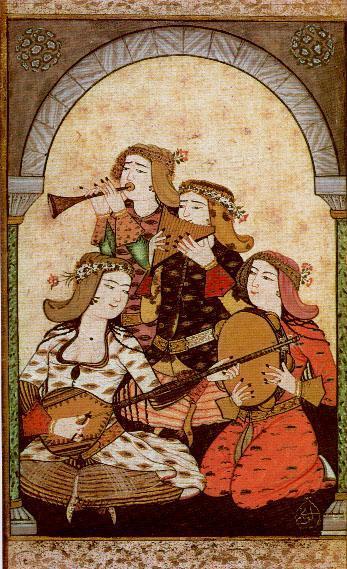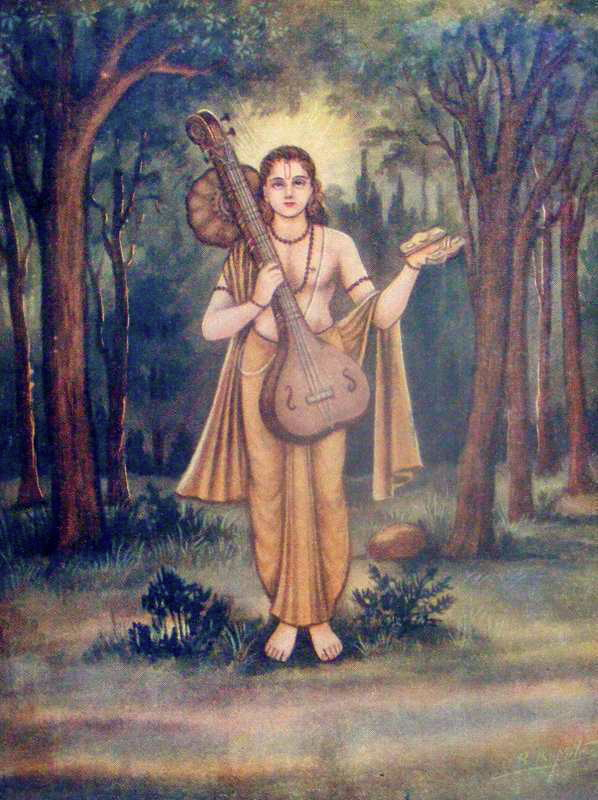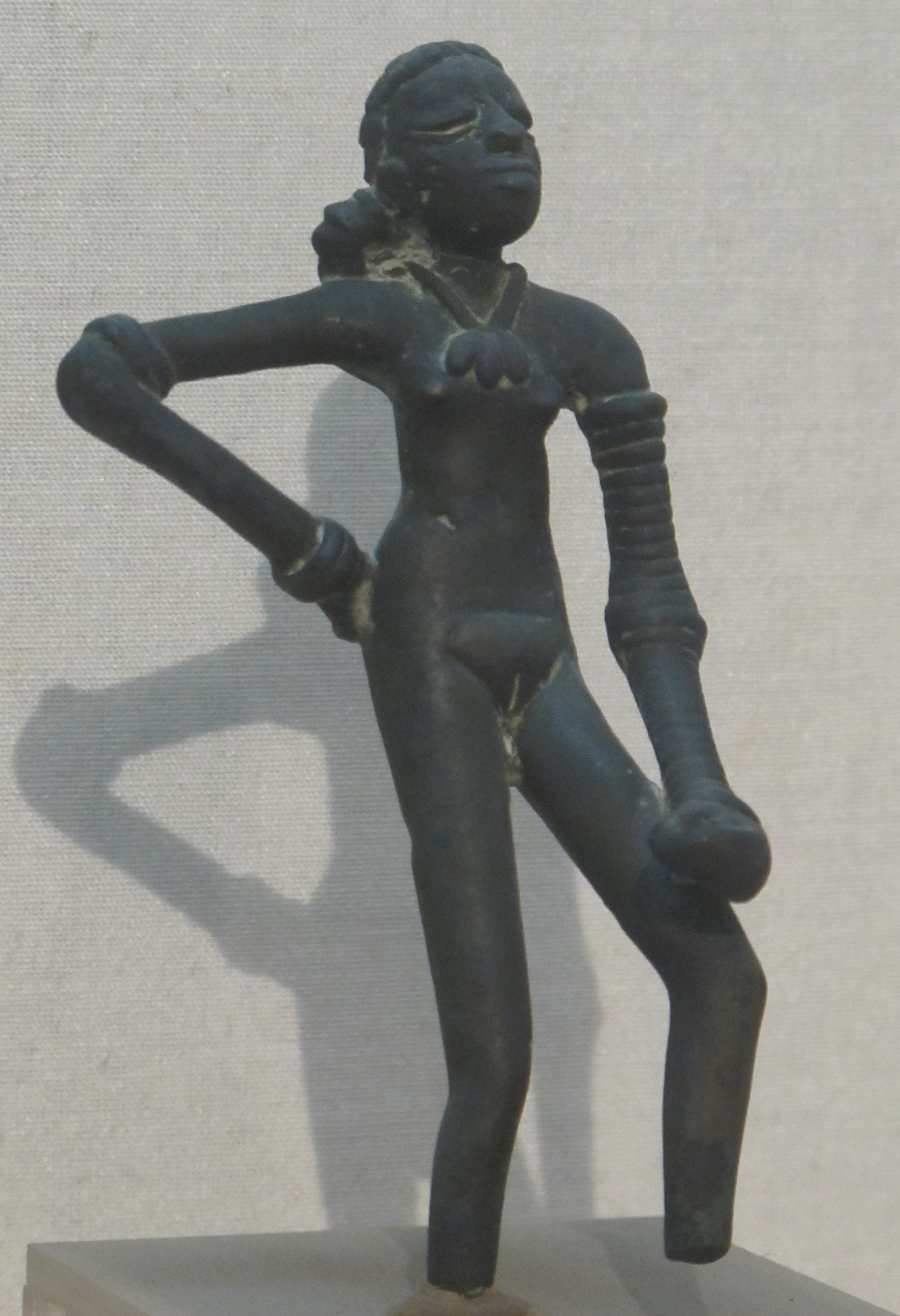|
Usul (music)
{{more citations needed, date=January 2011 In Ottoman classical music, ''usul'' is an underlying rhythmic cycle that complements the melodic rhythm and sometimes helps shape the overall structure of a composition. An usul can be as short as two beats or as long as 128 beats. Usul is often translated as "meter", but usul and meter are not exactly the same. Both are repeating rhythmic patterns with more or less complex inner structures of beats of differing duration and weight. But a student learning Turkish music in the traditional ''meşk'' system first memorizes the usul kinetically by striking the knees with the hands. The student then sings the vocal or instrumental composition while performing the underlying usul. This pedagogical system helps the student memorize the composition while internalizing the underlying rhythmic structure. Usul patterns have standard pronounceable vocables built from combinations of the syllables ''düm'', ''dü-üm'', ''tek'', ''tekkyaa'', ''teke'' ... [...More Info...] [...Related Items...] OR: [Wikipedia] [Google] [Baidu] |
Ottoman Classical Music
Ottoman music () or Turkish classical music (, or more recently ) is the tradition of Art music, classical music originating in the Ottoman Empire. Developed in the palace, major Ottoman cities, and Sufi lodges, it traditionally features a solo singer with a small to medium-sized instrumental ensemble. A tradition of music that reached its Golden Age, golden age around the early 18th century, Ottoman music traces its roots back to the music of the Hellenic Culture, Hellenic and Persianate society, Persianate world, a distinctive feature of which is the usage of a modal melodic system. This system, alternatively called ''Turkish makam, makam'', ''dastgah'' or ''echos'', is a large and varied system of melodic material, defining both scales and melodic contour. In Ottoman music alone, List of makams, more than 600 makams have been used so far, and out of these, at least 120 makams are in common use and formally defined. Rhythmically, Ottoman music uses the ''zaman'' and ''usûl'' ... [...More Info...] [...Related Items...] OR: [Wikipedia] [Google] [Baidu] |
Turkish Makam
The Turkish makam ( Turkish: ''makam'' pl. ''makamlar''; from the Arabic word ''maqām'' ) is a system of melody types used in Turkish classical music and Turkish folk music. It provides a complex set of rules for composing and performance. Each makam specifies a unique intervalic structure (''cinsler'' meaning genera) and melodic development (''seyir''). Whether a fixed composition ('' beste'', '' şarkı'', '' peşrev'', '' âyin'', etc.) or a spontaneous composition ('' gazel'', '' taksim'', recitation of '' Kuran-ı Kerim'', '' Mevlid'', etc.), all attempt to follow the melody type. The rhythmic counterpart of makam in Turkish music is usul. Geographic and cultural relations The Turkish makam system has some corresponding relationships to maqams in Arabic music and '' echos'' in Byzantine music. Some theories suggest the origin of the makam to be the city of Mosul in Iraq. "Mula Othman Al-Musili," in reference to his city of origin, is said to have served in the Ottoman ... [...More Info...] [...Related Items...] OR: [Wikipedia] [Google] [Baidu] |
Music Of Turkey
The roots of traditional music in Turkey span across centuries to a time when the Seljuk Turks migrated to Anatolia and Persia in the 11th century and contains elements of both Turkic and pre-Turkic influences. Much of its modern popular music can trace its roots to the emergence in the early 1930s drive for Westernization. Ashik, Âşık, Aytysh, atışma, singing culture, wedding dance continued way of having fun with family and friends as before. Due to industry music and music in daily life aren't same. Turkish people including new generations have nostalgia music culture., pp 396-410. With the assimilation of immigrants from various regions the diversity of musical genres and musical instrumentation also expanded. Turkey has also seen documented folk music and recorded popular music produced in the ethnic styles of Music of Greece, Greek, Music of Armenia, Armenian, Music of Albania, Albanian, Music of Poland, Polish, Music of Azerbaijan, Azeri and Jewish communities, among ... [...More Info...] [...Related Items...] OR: [Wikipedia] [Google] [Baidu] |
Asian Rhythm
{{disambiguation ...
Asian may refer to: * Items from or related to the continent of Asia: ** Asian people, people in or descending from Asia ** Asian culture, the culture of the people from Asia ** Asian cuisine, food based on the style of food of the people from Asia ** Asian (cat), a cat breed similar to the Burmese but in a range of different coat colors and patterns * Asii (also Asiani), a historic Central Asian ethnic group mentioned in Roman-era writings * Asian option, a type of option contract in finance * Asyan, a village in Iran See also * * * East Asia * South Asia * Southeast Asia * Asiatic (other) Asiatic refers to something related to Asia. Asiatic may also refer to: * Asiatic style, a term in ancient stylistic criticism associated with Greek writers of Asia Minor * In the context of Ancient Egypt, beyond the borders of Egypt and the cont ... [...More Info...] [...Related Items...] OR: [Wikipedia] [Google] [Baidu] |
Rhythm In Persian Music
Understanding the rhythmic aspect of Iranian music is aided by understanding the rhythmic structure of Persian poetry, the old Persian rhythmic cycles and the rhythmic characteristics of improvised and composed music. Analysis of more than fifty improvisations and pieces of composed music shows that the rhythmic organisation of ''gūsheh-ha'' and of musical genres in free metre, stretchable metre or fixed metre may be influenced by Persian poetic metres. Music-related manuscripts from the twelfth to fifteenth centuries CE provide an opportunity to compare more than thirty different rhythmic cycles. The system of rhythmic cycles is no longer explicitly used in Iranian music but contemporary improvisation and composition reveals that their influence is still felt, as in current techniques of tombak performance. This rich rhythmic vocabulary may bear ancestral relationship to the complex rhythms of India and certainly is related to traditional rhythms of North Africa and Ottoma ... [...More Info...] [...Related Items...] OR: [Wikipedia] [Google] [Baidu] |
Rhythm In Arabic Music
Rhythms in Arabic music are rich and very diverse, as they cover a huge region and peoples from Northern Africa to Western Asia. Rhymes are mainly analysed by means of rhythmic units called ''awzan'' and ''iqa'at''. Wazn and Iqa' A rhythmic pattern or cycle in Arabic music is called a "wazn" (; plural أوزان / ''awzān''), literally a " measure". A ''wazn'' is only used in musical genres with a fixed rhythmic-temporal organization including recurring measures, motifs, and meter or pulse. It consists of two or more regularly recurring time segments, each time segment consisting of at least two beats (''naqarāt'', plural of ''naqrah''). There are approximately one hundred different cycles used in the repertoire of Arabic music, many of them shared with other regional music, also found in some South European styles like Spanish music. They are recorded and remembered through onomatopoetic syllables and the written symbols O and I. ''Wazn'' may be as large as 176 units of ... [...More Info...] [...Related Items...] OR: [Wikipedia] [Google] [Baidu] |
Aksak
In Ottoman musical theory, ''aksak'' () is a rhythmic system in which pieces or sequences, executed in a fast tempo, are based on the uninterrupted reiteration of a matrix, which results from the juxtaposition of rhythmic cells based on the alternation of binary and ternary quantities, as in , , , etc. The name literally means "limping", "stumbling", or "slumping", and has been borrowed by Western ethnomusicologists to refer generally to irregular, or additive meters. In Turkish folk music, these metres occur mainly in vocal and instrumental dance music, though they are found also in some folksongs. Strictly speaking, in Turkish music theory the term refers only to the grouping of nine pulses into a pattern of . Some examples are shown below. In jazz The ''aksak'' rhythm is prominently featured in the jazz standard "Blue Rondo à la Turk" by Dave Brubeck. In rock The Belgian experimental rock group Aksak Maboul take their name from this rhythm. See also *Additive rhythm an ... [...More Info...] [...Related Items...] OR: [Wikipedia] [Google] [Baidu] |
Kalamatianos
The Kalamatianós (Modern Greek Συρτός Καλαματιανός ''Syrtós Kalamatianós'', but usually only called Καλαματιανός ''Kalamatianós'') is one of the best-known dances of Greece. It is a popular Greek dances, Greek folk dance throughout Greece, Cyprus and internationally and is often performed at many social gatherings worldwide. As is the case with most Greek folk dances, it is Circle dance, danced in chain with a counterclockwise rotation, the dancers holding hands. It is a joyous and festive dance; its musical beat is , subdivided into of three parts of 3+2+2 beats, corresponding to 3 steps per bar. There are 12 steps in the dance corresponding to 4 bars of music. These steps include 10 steps counterclockwise ("forward") followed by 2 steps clockwise ("backwards"). Depending on the occasion and the dancers' proficiency, certain steps may be taken as jumps or squats. The lead dancer usually holds the second dancer by a handkerchief, thus allowin ... [...More Info...] [...Related Items...] OR: [Wikipedia] [Google] [Baidu] |
Tala (music)
A tala (IAST ''tāla'') literally means a 'clap, tapping one's hand on one's arm, a musical measure'. It is the term used in Indian classical music similar to Metre (music), musical meter, that is any rhythmic beat or strike that measures musical time. The measure is typically established by hand clapping, waving, touching fingers on thigh or the other hand, verbally, striking of small cymbals, or a percussion instrument in the Indian subcontinental traditions. Along with ''raga'' which forms the fabric of a melodic structure, the ''tala'' forms the life cycle and thereby constitutes one of the two foundational elements of Indian music. ''Tala'' is an ancient music concept traceable to Vedas, Vedic era texts of Hinduism, such as the ''Samaveda'' and methods for singing the Vedic hymns. The music traditions of the North and South India, particularly the ''raga'' and ''tala'' systems, were not considered as distinct until about the 16th century. There on, during the tumultuous ... [...More Info...] [...Related Items...] OR: [Wikipedia] [Google] [Baidu] |
Music Of India
Owing to India's vastness and diversity, Indian music encompasses numerous genres in multiple varieties and forms which include classical music, folk, rock, and pop. It has a history spanning several millennia and developed over several geo-locations spanning the sub-continent. Music in India began as an integral part of socio-religious life. History Pre-history Paleolithic The 30,000-year-old paleolithic and neolithic cave paintings at the UNESCO world heritage site at Bhimbetka rock shelters in Madhya Pradesh show a type of dance. Mesolithic and chalcolithic cave art of Bhimbetka illustrates musical instruments such as Gongs, Bowed Lyre, daf etc. Neolithic Chalcolithic era (4000 BCE onward) narrow bar shaped polished stone celts like music instruments, one of the earlier musical instrument in India, were excavated at Sankarjang in the Angul district of Odisha. There is historical evidence in the form of sculptural evidence, i.e. musical instruments, singing ... [...More Info...] [...Related Items...] OR: [Wikipedia] [Google] [Baidu] |
Rhythm
Rhythm (from Greek , ''rhythmos'', "any regular recurring motion, symmetry") generally means a " movement marked by the regulated succession of strong and weak elements, or of opposite or different conditions". This general meaning of regular recurrence or pattern in time can apply to a wide variety of cyclical natural phenomena having a periodicity or frequency of anything from microseconds to several seconds (as with the riff in a rock music song); to several minutes or hours, or, at the most extreme, even over many years. The Oxford English Dictionary defines rhythm as ''"The measured flow of words or phrases in verse, forming various patterns of sound as determined by the relation of long and short or stressed and unstressed syllables in a metrical foot or line; an instance of this"''. Rhythm is related to and distinguished from pulse, meter, and beats: In the performance arts, rhythm is the timing of events on a human scale; of musical sounds and silences that occur ... [...More Info...] [...Related Items...] OR: [Wikipedia] [Google] [Baidu] |




